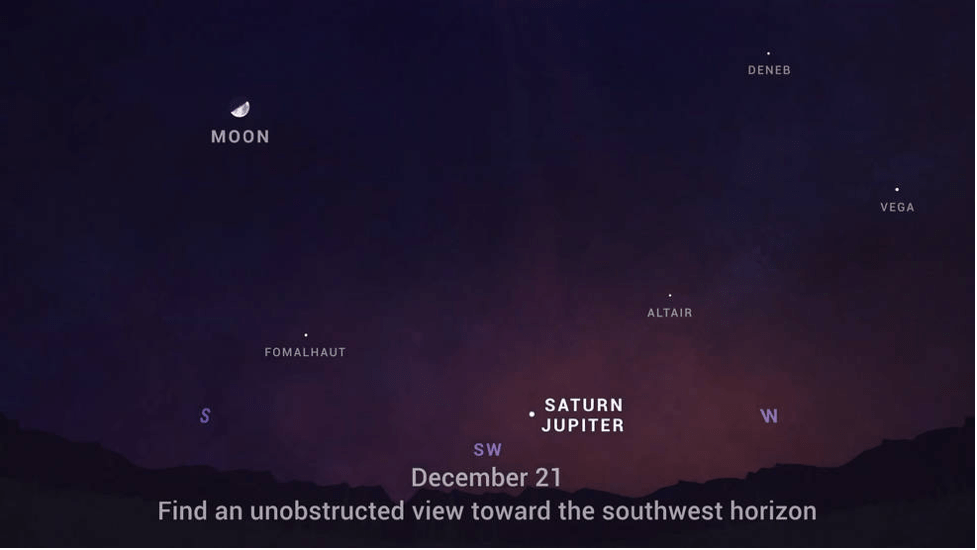After a difficult year, astronomy enthusiasts all over the world will have their eyes glued to the skies watching as Jupiter and Saturn inch closer together. This planetary conjunction has been referred to as the “Christmas Star” and will be an exciting treat for sky watchers everywhere.
A conjunction occurs when two astronomical objects appear to be close together in the sky, in this case, Jupiter and Saturn. The last time a conjunction between Jupiter and Saturn was this close occurred 800 years ago in 1226. This year, the conjunction will occur on the darkest night of the year, December 21, the Winter Solstice.
Here are a few tips for watching the conjunction.
- You can see the conjunction with your unaided eye.
- Although, binoculars or a telescope will help you see more detail such as the four Galilean moons of Jupiter and the rings of Saturn.
- Look to the southwest starting an hour or so after sunset.
- Jupiter is the brightest of the two and will outshine the other stars.
- Be quick, both planets will be sinking down toward the horizon and they set at 8:30 pm on the 21st.
- You don’t have to wait until the 21st. Watch as the two planets slowly move closer to each other prior to the 21st and as they slowly move away from each other after the 21st.
Here are a few tips for photography.
- The event can be captured using a cell phone camera.
- Use the ‘night mode’ on your phone for a more stable and longer exposure.
- Try to hold your phone on a surface to stabilize it.
- Take a lot of photos! You can delete the ones that don’t come out.
- Avoid using the zoom, it will make the photos look fuzzy.
- Frame the photos with surrounding objects such as trees.
- Try a DSLR camera on a tripod if you have one. See this NASA website for some suggestions. https://solarsystem.nasa.gov/news/1615/how-to-photograph-the-conjunction-of-saturn-and-jupiter/
For more information on Jupiter and Saturn, check out the FAS Young Astronomers Blogs.
- https://www.fas37.org/wp/jupiter/
- Saturn (and a conjunction with Jupiter). https://www.fas37.org/wp/saturn-and-a-conjunction-with-jupiter/


Recent Comments